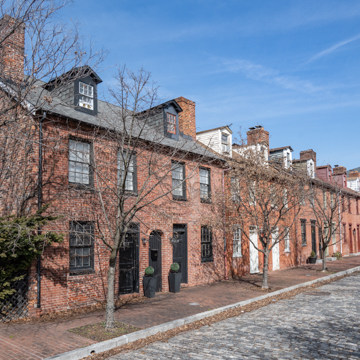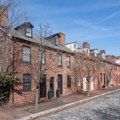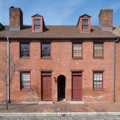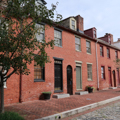This row of the ubiquitous two-and-a-half-story Baltimore row house was among the first to be renovated under the city’s path-breaking 1970s Homesteading project aimed at the revitalization of abandoned city-owned houses. Under the program, any one of five thousand vacant houses could be purchased for $1 by a new owner willing to commit to its renovation. The highly successful program is credited with the resurgence of such older areas of the city suffering from deterioration and suburban flight as Federal Hill, Fell’s Point, and Otterbein. This was the most common row house form to appear in Baltimore from the 1790s through the mid-nineteenth century. The units are grouped in pairs with sally ports between units for access to the backyards from an otherwise impenetrable row. They originally provided housing for workers in Old Town’s early manufacturing district.
You are here
HOMESTEAD ROW HOUSES
If SAH Archipedia has been useful to you, please consider supporting it.
SAH Archipedia tells the story of the United States through its buildings, landscapes, and cities. This freely available resource empowers the public with authoritative knowledge that deepens their understanding and appreciation of the built environment. But the Society of Architectural Historians, which created SAH Archipedia with University of Virginia Press, needs your support to maintain the high-caliber research, writing, photography, cartography, editing, design, and programming that make SAH Archipedia a trusted online resource available to all who value the history of place, heritage tourism, and learning.











